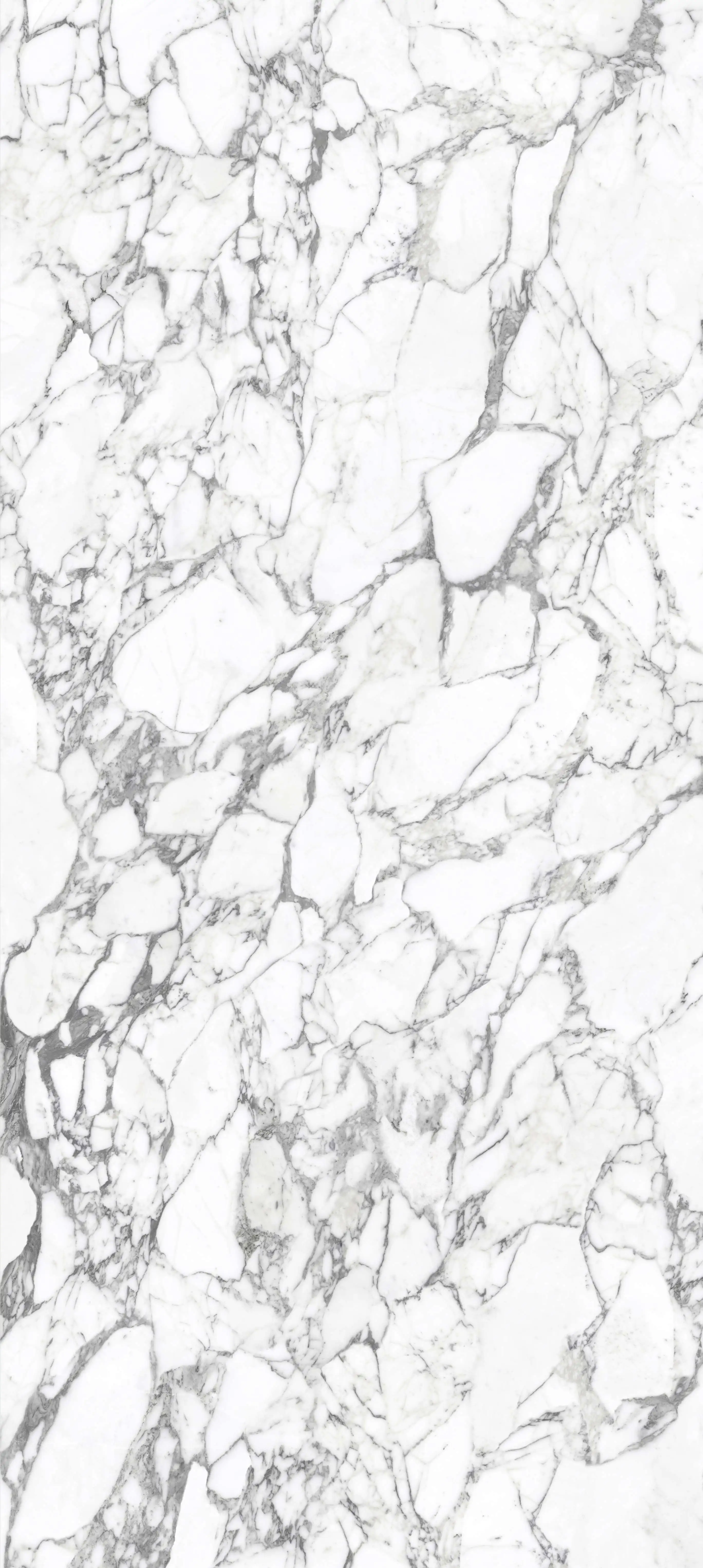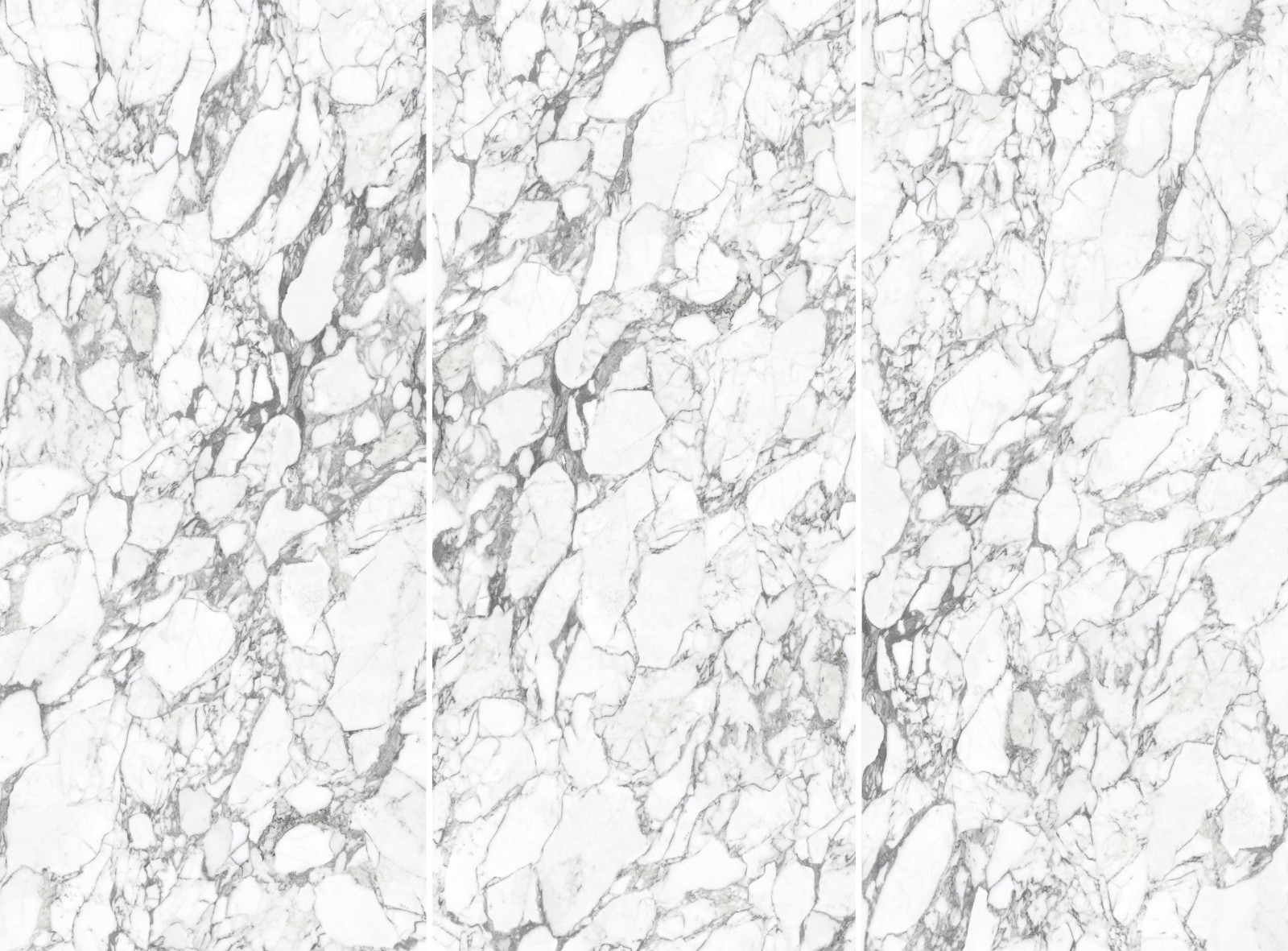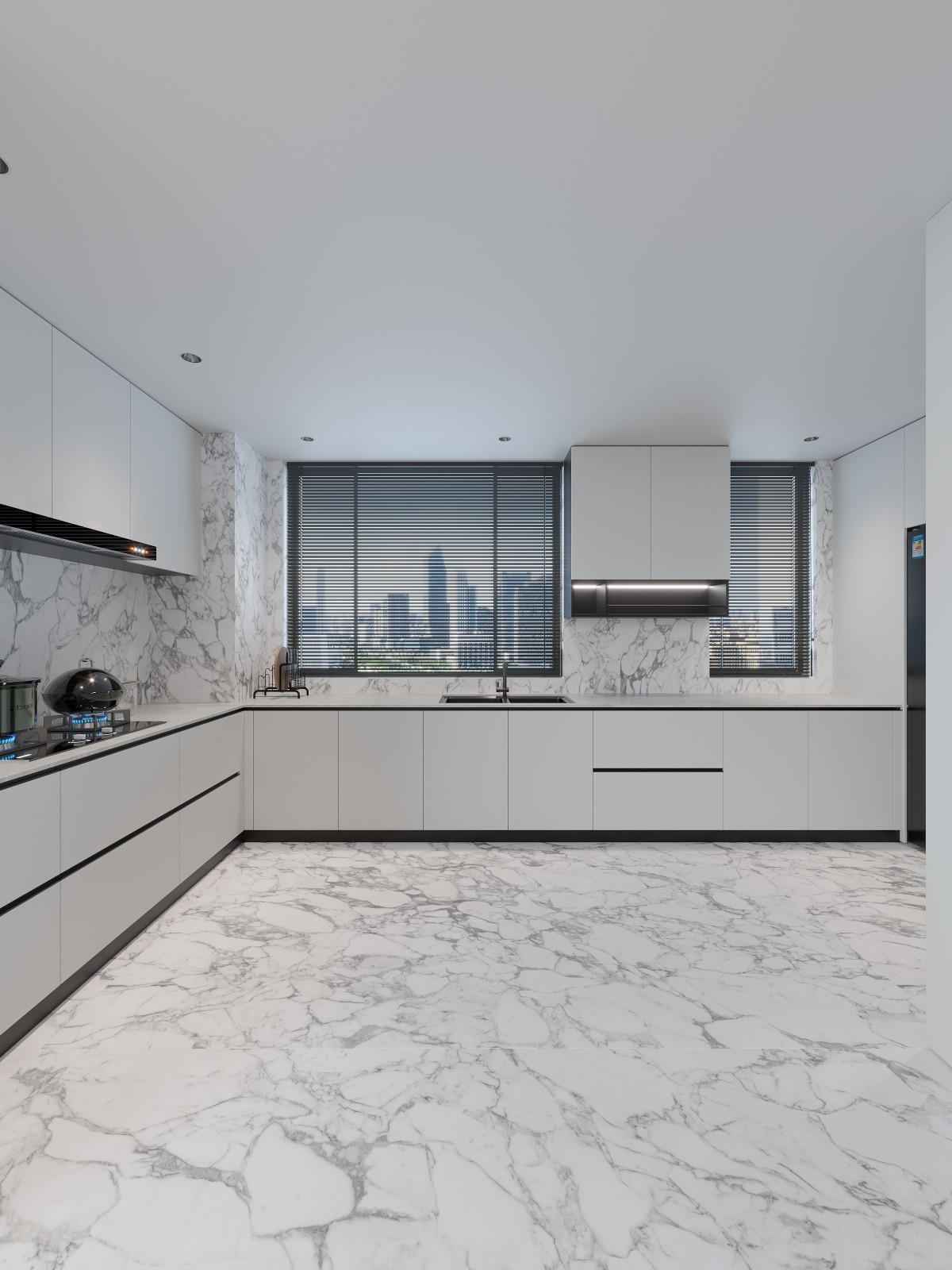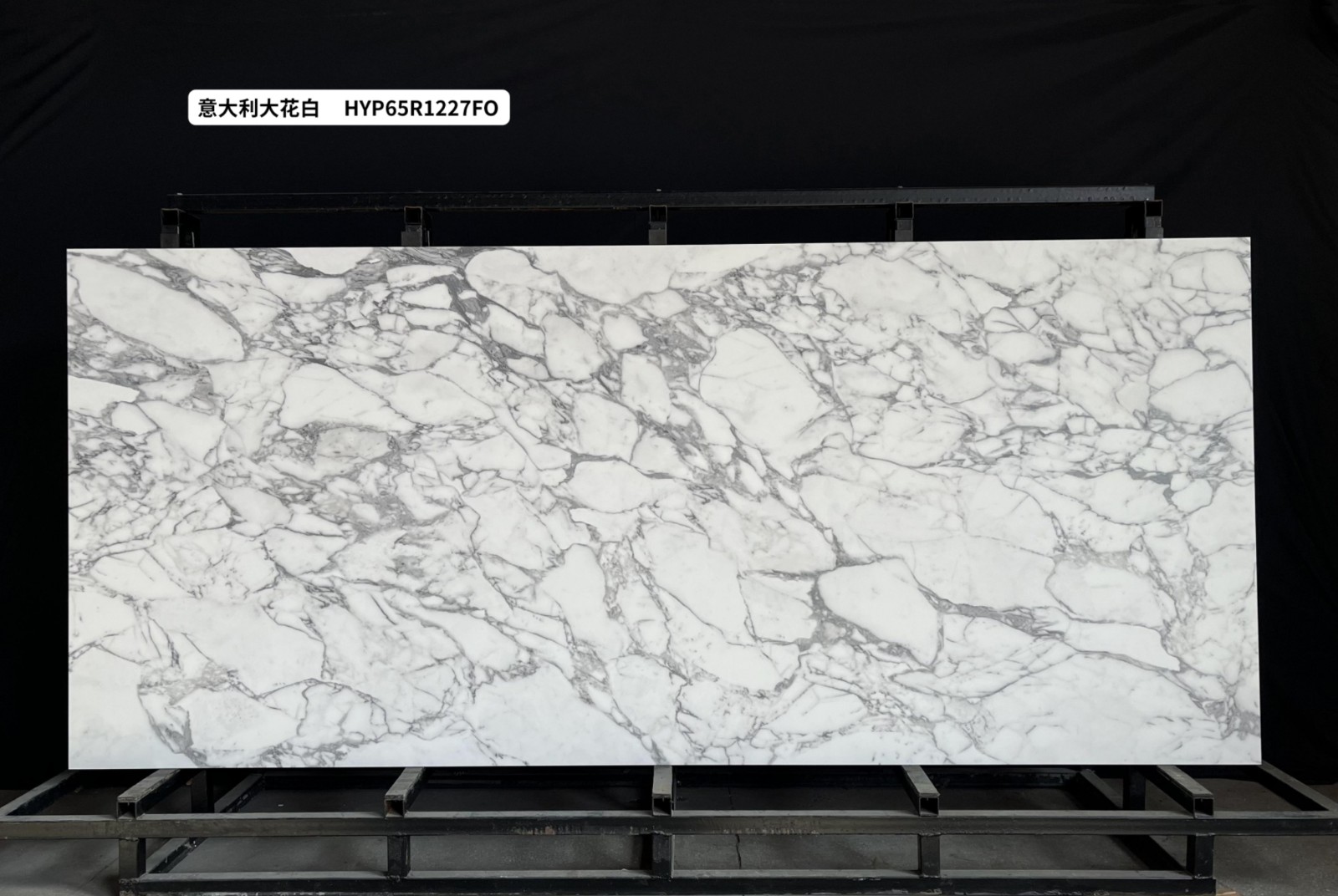Sintered stone countertops are popular in kitchen and bathroom renovations for their durability and aesthetic appeal. However, many consumers often wonder, "Will sintered stone countertops yellow?"
This article will provide a detailed analysis of sintered stone countertops from multiple perspectives, including their material properties, usage environment, and cleaning methods, to help you fully understand the color changes associated with sintered stone countertops.

What material is sintered stone countertop made of? Is its color stable?
Sintered stone countertops are a high-tech stone product made by sintering natural mineral powder at high temperatures. The production process is similar to a combination of ceramic and artificial stone, resulting in countertops with high hardness, density, and wear resistance.
• Material Composition: Sintered stone countertops are primarily composed of natural minerals, metal oxides, and polymer binders.
• Color Source: The countertop's color primarily comes from the natural color of the mineral itself and mineral pigments added during the sintering process.
• Color Stability: Due to the high temperature and pressure of the sintering process, mineral pigments are fixed within the stone's crystal structure, resulting in a highly stable color. Theoretically, under normal use, a sintered stone countertop's color should not change easily, let alone yellow.
However, in real life, whether a countertop will yellow depends closely on the usage environment and maintenance habits.

Under what circumstances might a sintered stone countertop yellow?
While sintered stone countertops are inherently stable, slight yellowing may occur under certain circumstances.
1. Prolonged Exposure to High Temperatures or Direct Sunlight
Sintered stone countertops are highly heat-resistant, but prolonged exposure to hot pots or direct sunlight may cause minor oxidation of the mineral components in the surface, resulting in a slight yellowing.
2. Detergent or Chemical Residue
Certain strong acids, bases, or bleach-based cleaners available on the market, if used frequently and not rinsed thoroughly, can damage the countertop's protective surface layer, causing a slight yellowing or dulling.
3. Grease and Lime Accumulation
Although sintered stone countertops are highly stain-resistant, if grease, coffee, limescale, and other stains are not cleaned for a long time, the surface may develop a yellowish tint.
4. Air Pollution or Smoke
Frequent cooking and grilling in the kitchen can cause smoke particles to adhere to the countertop surface, potentially causing a slight yellowing.
Generally speaking, the yellowing of sintered stone countertops is very rare, but long-term external factors may cause visual yellowing.

How to Determine Whether Yellowing on Sintered Stone Countertops Is True or a Surface Stains?
If you notice yellowing on a sintered stone countertop, you need to first determine whether it's due to the material itself or a surface stain. You can determine this by:
1. Wipe with warm water and a neutral detergent
Use a soft sponge or cloth to clean the countertop surface thoroughly. If the yellowing disappears, it's due to surface contamination, not material discoloration.
2. Spot Rub Test
Gently rub an inconspicuous area and wipe with a clean cloth. If the color returns to normal, it indicates that the yellowing is caused by an adhering substance.
3. Observe the color under different lighting conditions
Observe the countertop under natural light and under a lamp. If the yellowing is limited to oil or scale stains, it is most likely due to surface stains, not oxidation and yellowing of the sintered stone countertop itself.
The above method can effectively distinguish between inherent discoloration of the sintered stone countertop and surface contamination.
How to prevent yellowing during use of a sintered stone countertop?
To maintain the long-term beauty of your sintered stone countertop, take the following measures during daily use:
1. Avoid direct contact with high temperatures
Use potholders or potholders whenever possible, and avoid placing freshly boiled pots directly on the countertop.
2. Choose a mild detergent
Use a neutral detergent whenever possible, and avoid using strong acids or bases to prevent damaging the surface protective layer.
3. Clean oil and water stains promptly
After cooking, promptly clean oil, water, and beverage residue with warm water and a rag to minimize the chance of yellowing.
4. Avoid prolonged direct sunlight
If your kitchen countertop has large windows, consider using curtains or other shades to reduce the impact of UV rays on the countertop.
5. Regular maintenance
Using a professional sintered stone countertop care solution or protectant can enhance the surface's stain resistance and antioxidant properties, further preventing minor yellowing.
With proper use and daily care, sintered stone countertops can maintain their original beauty for a long time without noticeable yellowing.
Do sintered stone countertops yellow more easily than other countertop materials?
Common countertop materials include marble, engineered stone, solid wood, and lacquered wood.
1. Marble Countertops
Natural stone is inherently porous and easily absorbs oil and moisture. If not properly cared for, it may yellow or dull.
2. Artificial Stone Countertops
Countertops made primarily of polymer resin may slightly yellow under prolonged direct sunlight.
3. Solid Wood Countertops
The natural color of wood oxidizes over time, naturally turning yellow or darker.
4. Sintered Stone Countertops
Because the sintering process fixes the mineral particles at high temperatures, sintered stone offers superior resistance to heat, UV rays, and oxidation, making it generally less susceptible to yellowing than the aforementioned materials.
Therefore, in terms of color stability, sintered stone countertops are among the most resistant to yellowing.

Can yellowing on sintered stone countertops be repaired?
If a sintered stone countertop exhibits slight yellowing, it's likely due to surface stains or minor oxidation. The following methods can be used to correct the problem:
1. Deep Cleaning with a Neutral Detergent
Use warm water and a neutral detergent and repeatedly wipe the countertop surface to remove any lingering stains.
2. Professional Polishing or Polishing
For minor surface oxidation, use a sintered stone polishing powder or polishing equipment to restore the original gloss and color.
3. Protective Coating
After repair, apply a special protective agent to prevent re-oxidation and yellowing.
It is worth noting that the sintered stone countertop structure itself is not easily altered, so deep yellowing generally does not occur. Only surface treatment is required to restore its beauty.
Can WOWSLAB provide marble slabs for both residential and commercial projects?
Absolutely. WOWSLAB specializes in high-quality Calacatta marble slabs and sintered stone slabs suitable for various applications. Our factory in China offers wholesale and customized solutions, low prices, and promotional discounts.
Buyers can request quotes tailored to specific project needs. Our professional team provides complete support, including design consultation and installation guidance.


